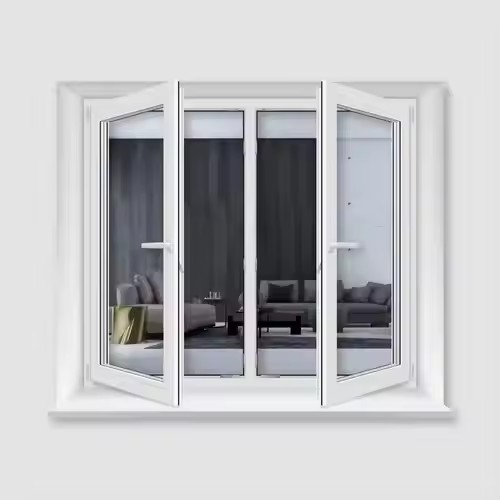I. Material Selection: The Source of Durability
The intrinsic properties of materials are fundamental to the durability of curtain walls. When selecting curtain wall materials, it is essential to consider the local climate, environmental conditions, building function, and design requirements. It is also crucial to source materials directly from reputable manufacturers to ensure quality and durability from the origin.
Durability of Primary Structural Materials
The supporting structure of curtain walls typically uses metal materials or glass. Aluminum alloys are lightweight and corrosion-resistant but have relatively low strength and may exhibit creep under long-term loads. Therefore, it is important to select aluminum alloy profiles that comply with national standards, with strictly controlled silicon and magnesium content to ensure corrosion resistance and strength.
Steel has high strength but is prone to rust. Hot-dip galvanizing and anti-corrosion coatings are required to enhance rust resistance, especially in humid or coastal regions, where weathering steel or advanced anti-corrosion treatments should be used.
Glass, as the main panel material, must be resistant to impact, thermal stress, and aging. Laminated or insulating glass can improve wind pressure resistance and thermal insulation, and also reduce the risk of spontaneous breakage due to temperature changes.
After the curtain wall framework is designed, the quality of the curtain wall must be evaluated to minimize inconsistencies.
Durability Requirements for Connection and Sealing Materials
Joints and sealing areas are the most prone to leakage and structural failure. Connectors (e.g., bolts, anchors) should be made of stainless steel to prevent loosening caused by corrosion of standard steel.

Sealants are key to waterproofing and must be silicone structural sealants with verified long-term elasticity, adhesion, and weather resistance. Inferior sealants tend to age and crack, allowing water ingress and even panel detachment. For areas with strong UV exposure, UV-resistant sealants should be used to maintain both appearance and sealing performance.
Weather Resistance of Finishing Materials
Cladding materials (e.g., stone, metal panels, ceramic panels) are directly exposed to environmental elements, making their weather resistance vital. Granite, with high density and low water absorption, is preferred over more erosion-prone stones like marble.
Metal panels (e.g., aluminum, copper) should undergo fluorocarbon coating with compliant thickness and adhesion to resist acid rain and salt spray. Ceramic panels offer excellent acid-alkali resistance and UV protection, but their installation must accommodate thermal expansion and contraction to prevent cracking.
II. Structural Design: Supporting Material Durability
Sound structural design minimizes stress concentrations and environmental damage, thus improving curtain wall durability. The principle is to ensure clear functional zoning, well-defined stress transfer, and effective environmental protection.
Thermal Deformation and Stress Relief Design
Curtain wall materials expand and contract with temperature changes. Poor design can lead to cracking or distortion. For example, aluminum has a high linear expansion coefficient, so expansion joints should be included at profile connections, along with elastic connectors (e.g., friction stays, flexible pads) to absorb stress.
Glass panels should have wide enough sealant joints to accommodate movement due to thermal stress. For large curtain walls, unitized construction can divide the curtain wall into independent modules, each connected elastically to the structure, minimizing the impact of temperature deformation.
Waterproofing and Drainage System Design
Water is a major cause of corrosion and mold. The waterproof design of curtain walls should follow the principle of “multiple barriers and guided drainage.”
First, sealant joints between panels serve as the primary waterproof barrier.
Second, internal drainage cavities guide water out through sloped designs to prevent pooling.
For high-rise or storm-prone areas, drip edges at the bottom of the curtain wall prevent water backflow.
For example, interlocking joints and waterproof coatings on the back of stone panels create a dual-layer defense, while interlocking seams in metal panels reduce water infiltration paths.

Anti-Corrosion and Anti-Mold Design
When different metals are in contact, galvanic corrosion may occur (e.g., between aluminum and steel). Insulating pads (e.g., nylon washers) should be used to prevent such reactions.
In humid areas (e.g., bathrooms, kitchens), moisture-resistant materials (e.g., stainless steel frames, waterproof sealants) should be used. Ventilation holes should be provided in gaps to reduce condensation.
Organic materials like wood should be treated for rot and insect resistance and coated with weather-resistant paints to prevent decay.
III. Construction Techniques: Guaranteeing Durability in Practice
Construction quality directly impacts material durability. Even with sound design, poor construction can cause premature material failure. The construction process must strictly follow the design specifications, with rigorous attention to detail and quality inspection procedures.

